#Cuisine And Culture
Explore tagged Tumblr posts
Text
Explore the rich tapestry of cuisine and culture with our curated cuisine offerings. Experience exquisite food pairing that enhances flavors and traditions. Discover unique culinary experiences that celebrate heritage and innovation, bringing every meal to life.
Visit:- https://spiritsandrituals.com/cuisine-culture/

0 notes
Text
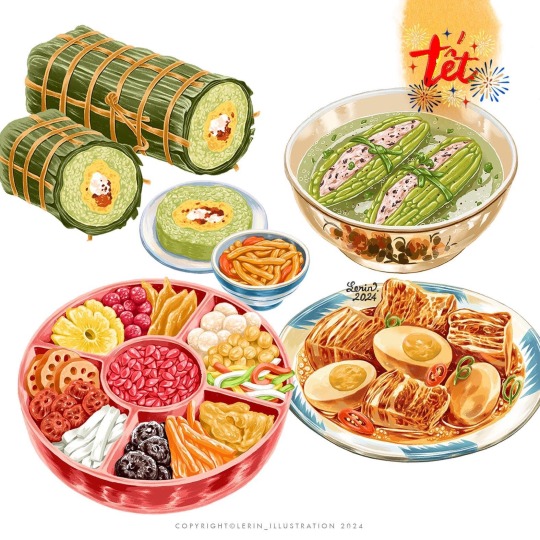
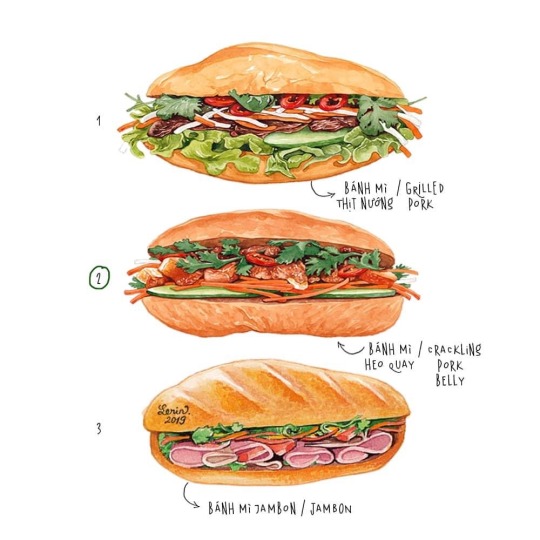
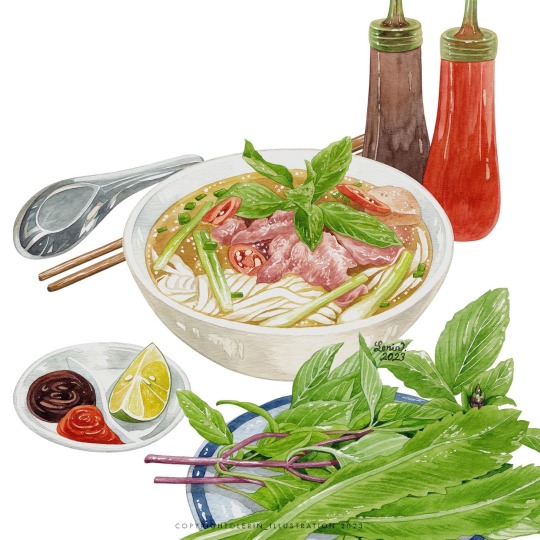
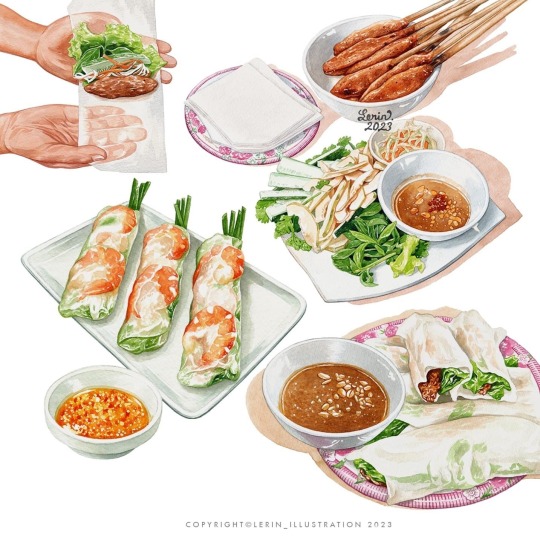
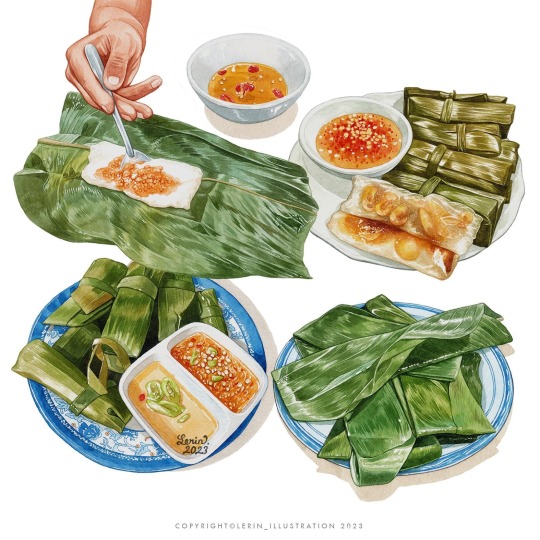
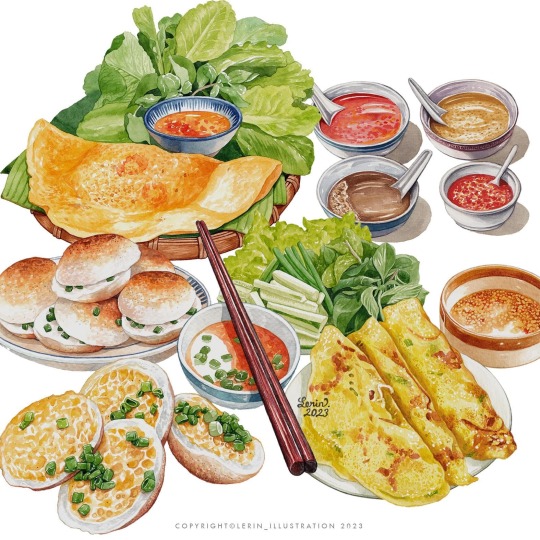
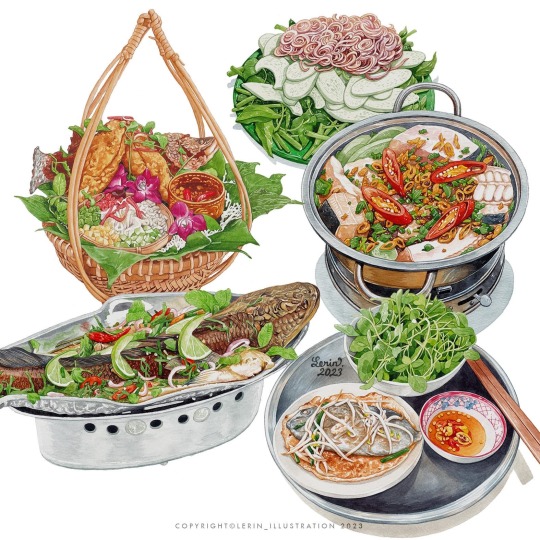

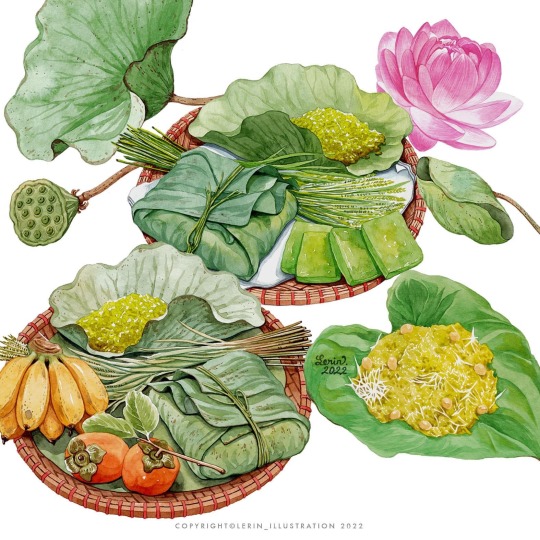
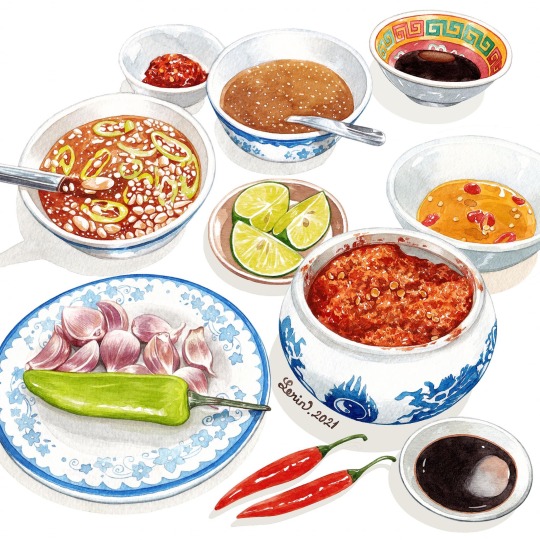
Illustrations of Vietnamese food. Credit to Le Rin.
#vietnam#vietnamese#culture#travel destinations#cuisine#vietnamese food#asian food#illustration#food illustration#digital art#artwork#art#banh mi#lunar new year#spring rolls#rice cakes#condiments#hot pot#hanoi#hue vietnam#saigon#digital painting#paintings#painting#drawing#digital sketch#watercolour sketch#sketch#healthy food#looks tasty
13K notes
·
View notes
Text




Fenglin Pavilion 风临阁, Datong city, Shanxi province, China.
Originally built in 1518 during the Ming dynasty. It’s now a restaurant that serves traditional Shanxi cuisine.


It is said that a coal tycoon spent 370 million yuan (more than 50 million USD) to renovate it. With the toilet alone, which is made out of real copper, jewels, and pearls, costing 5 million yuan (more than 650,000 USD).


#china#chinese heritage#chinese culture#chinese architecture#Architecture#chinese#people’s republic of china#prc#east asia#Shanxi#Shanxi province#datong#Ming dynasty#Ming#dynastic China#imperial China#🇨🇳#Han Chinese#Northern China#sino#chinese history#Chinese courtyards#Chinese pavilion#Chinese houses#Chinese palaces#Chinese restaurants#shanxi food#shanxi cuisine
328 notes
·
View notes
Text
Favorite Foods: Zuko
Whereas everyone else's favorite foods required research and conjecture, Zuko's post mostly builds off what we see in the show. The foods Zuko likes are inspired by multiple real-life cultures. Links to recipes will be included.

Larou (臘肉) - Also called Lap Yuk in Cantonese, is cured pork belly aka bacon. According to the old Nickelodeon ATLA page, sizzle-crisps appear to be the Fire Nation's version of bacon bits. And, according to the official Avatar cookbook, sizzle-crisps are Zuko's favorite snack. He likes their long shelf-life and versatility, which are necessities for food meant to be stored on a ship. He not only eats them on their own as a snack, but uses them as seasoning for any dishes he considers under-seasoned and bland, which is most non-Fire Nation food. As such, he always carries around a bag of "sizzle crisps", like how some people always have hot sauce on their person. He likes his larou extra peppery.
Shaved Ice - A popular summer treat in many parts of the world, Asia included. In its most basic form, shaved ice is frozen water or milk, topped with a sweet syrup. Shaved ice brings back bittersweet memories for Zuko, reminding him of fun times spent at Ember Island with his family. Zuko's favorite flavors are guava and watermelon. He normally eats a pretty basic version in public, but will go all out with toppings when no one's watching.
Jook - Jook is the Cantonese name for rice porridge and the term Iroh uses when serving it to Zuko. Considering Zuko's tendency to push himself too hard, it's likely that the prince had a good number of bed-rest days during his banishment. As such, I think Iroh is quite used to preparing jook for his nephew. While Zuko initially didn't appreciate being "babied" (from his perspective), he comes to associate jook with his uncle's love for him. Rice porridge is eaten all over Asia.
Inihaw Na Bangus - Tagolog for "Grilled Milkfish", this is a popular fish dish in the Philippines. The milkfish is stuffed with flavorful ingredients, scored, and grilled over a fire. During the book 1 episode, "The Warriors of Kyoshi", Zuko is shown being served what looks to be this dish by his ship's cook. I feel that Zuko would have a love-hate relationship with this meal. He genuinely loves eating it, but it was also served to him very often, due to the availability of the fish while out at sea. Thus, Zuko went through cycles of eating it constantly, and then not even wanting to see it for months at a time. After the war, it became a meal he'd have about once a week.
Sea cucumber sashimi - As I mentioned in a previous post, "sea slug" is a more antiquated name for the sea cucumber. In ATLA, smoked sea slug is served as commoner's food, while parts of the sea slug are served raw to the wealthy. In real life, sea slug/cucumber is actually an expensive delicacy that's served raw in Japan and Korea. Considering Zuko's willingness to steal high quality food in Book 2, I always felt that he probably has a rather refined palette. "Sea slug" sashimi was probably the dish he missed most from the FN palace. He liked dipping it in soy sauce mixed with chili paste.
Tea - I'm sure we all saw this coming. Under Iroh's influence, Zuko comes to appreciate tea. While not the connoisseur that his uncle is, he does enjoy winding down with a mellow jasmine tea at the end of the day.
Also, I think we can all agree that Zuko would never eat a turtle-duck. ^_^
348 notes
·
View notes
Text
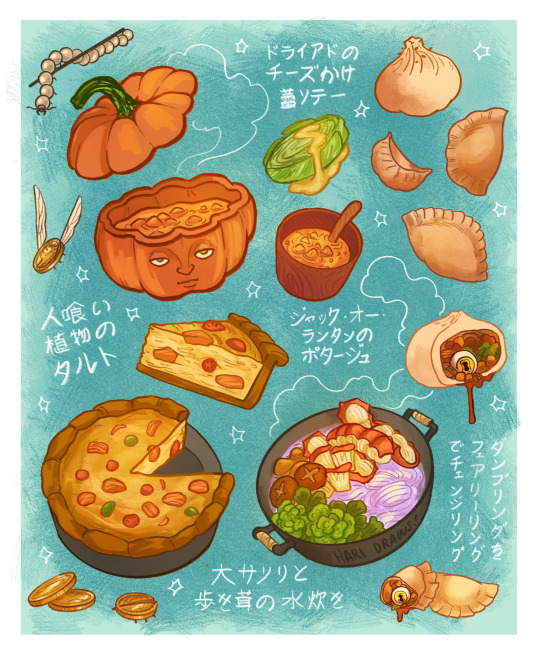
delicious ordinary food. completely normal. no catch
#dungeon meshi#delicious in dungeon#i just finished reading all the manga volumes that are out!!! spot the reference to my favourite character... creature...#i'm not japanese but i studied it in school a Lot and our high school teacher made us take cooking classes in japanese to improve#obv they dont cook much trad japanese cuisine in the manga but some of the methods and cultural attitudes to food make me v nostalgic!!!#art#my art#fanart#misc fanart
577 notes
·
View notes
Text
People be like "Russia is not imperialistic"🤡 - and then the most famous Ukrainian chef cannot open a restaurant of the most famous Ukrainian cultural food in Japan, because Japanese widely consider borscht a Russian dish and so would avoid the restaurant thinking it to be Russian🫤🫤🫤🤯🤯🤯

#ukraine#japan#ukrainian culture#borscht#russian imperialism#russian invasion#ruscism#genocide#like.... thank you to Japanese for avoiding all Russian products#and for supporting Ukraine#this is not your fault#its fucking Russia's and its imperialism#moreover#the far East of Russia is where Russian regime forcefully displaced many Ukrainians#during Soviet times#so I am almost sure Japan actually learnt borsch from Ukrainians#they just belived it to be Russian cause it was coming from Russian territory near them🫤#culture appropriation#україна#укртумбочка#укртумба#укртамблер#ukrainian cuisine#yevhen klopotenko
706 notes
·
View notes
Text

hotpot!
#hotpot my beloved... included mix of my fav add ins + popular ones#might do something more with this idea at some point? like a print? charm? sticker sheet? idk#hotpot#asian food#asian cuisine#chinese culture#chinese food#food art#food#idk what else to tag as#procreate#illustration#koob art
285 notes
·
View notes
Photo

Allioli (which literally means “garlic and oil” in Catalan) is a traditional sauce from the Western Mediterranean, very commonly used in the cuisine of the Catalan Countries. It’s also used in Occitania, and less commonly in Sicily, Malta, Aragon and Andalusia.
(Also, thanks to allioli the Catalan population is probably eternally safe from vampires at this point)
Photo from Alimentació (Generalitat de Catalunya).
#menjar#allioli#food#sauce#foodie#foodblr#food photography#cuisine#gastronomy#savory#savoury#garlic#olive oil#mediterranean food#mediterranean cuisine#catalan cuisine#catalan food#catalan culture#italian food#sicily#malta
199 notes
·
View notes
Text

In the Netherlands, approximately 750,000 hagelslag sandwiches are eaten each day, totaling over 14 million kilograms consumed annually.
#Hagelslag#Dutch Cuisine#Chocolate Sprinkles#Netherlands#Breakfast Traditions#Dutch Food#Sandwiches#Culinary Habits#Food Culture#Sweet Treats
109 notes
·
View notes
Note
what does the gatta bread smell and/or taste like?? just the picture made me ravenous
ah! where to start?
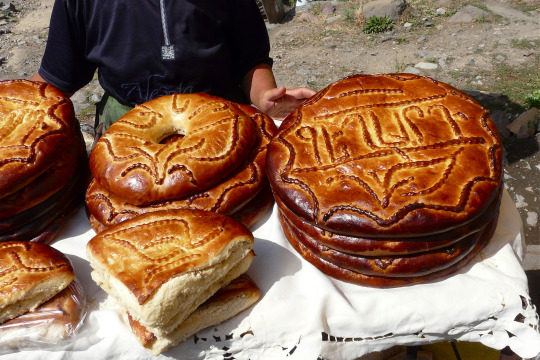
Armenian Gatta is a magically fragrant sweet bread with a golden-brown crust and a soft (sometimes flaky) interior. It has a crusty texture that softens upon biting into it and is filled with a sweet mixture called "khoriz," made from a fluffy blend of flour, butter and sugar. Gatta has many regional variations, with some incorporating nuts or dried fruit into the filling. It’s very sweet and buttery in taste.
As for its aroma, imagine the comforting, warm scent of vanilla! Whenever it's baked at home, this magical aroma permeates every nook and cranny of the space. When strolling past Armenian bakeries, it's easy to tell when fresh gatta is ready—the scent is THAT prominent! (To me, it evokes memories of childhood and our neighborhood.)
Gatta is associated with various enjoyable traditions. In some families, on New Year’s Day, a coin is hidden inside the dough before baking, and it's believed that whoever receives the slice with the coin will be blessed with good fortune (spoiler: it’s never me hehe).

#my words won't do justice to the heavenly magic that is Gatta#asks#armenia#armenian cuisine#armenian culture
316 notes
·
View notes
Text
Cuisine & Culture | Food Pairing | Curated Cuisine
Discover the essence of cuisine and culture through expertly curated cuisine. Experience perfect food pairing that enhances flavors and celebrates culinary traditions. Explore our selection for an unforgettable gastronomic journey that bridges heritage and modernity. Explore the rich tapestry of cuisine and culture with our curated cuisine offerings. Experience exquisite food pairing that enhances flavors and traditions. Discover unique culinary experiences that celebrate heritage and innovation, bringing every meal to life. Visit:- https://spiritsandrituals.com/cuisine-culture/
0 notes
Text





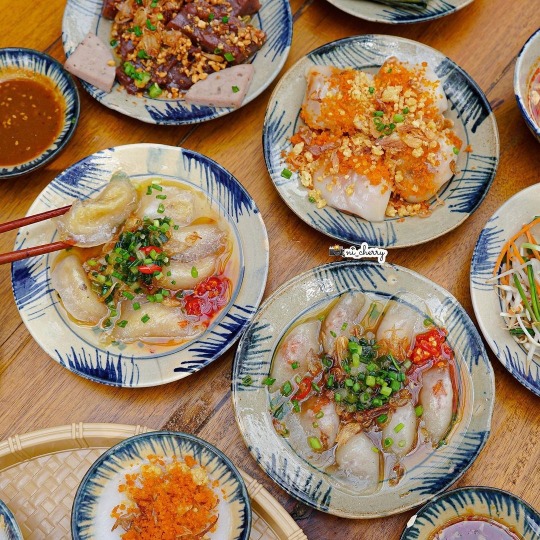
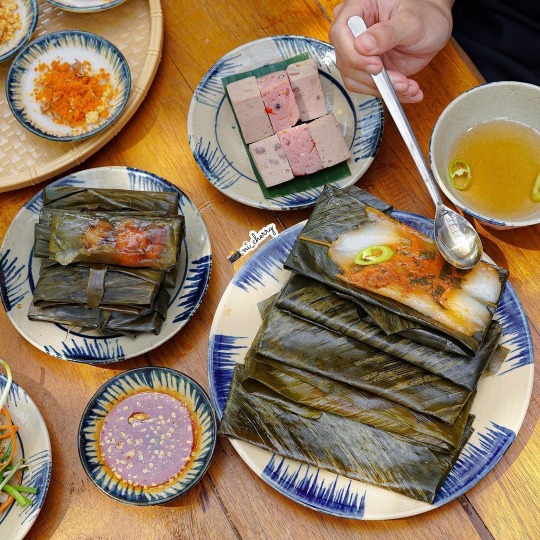

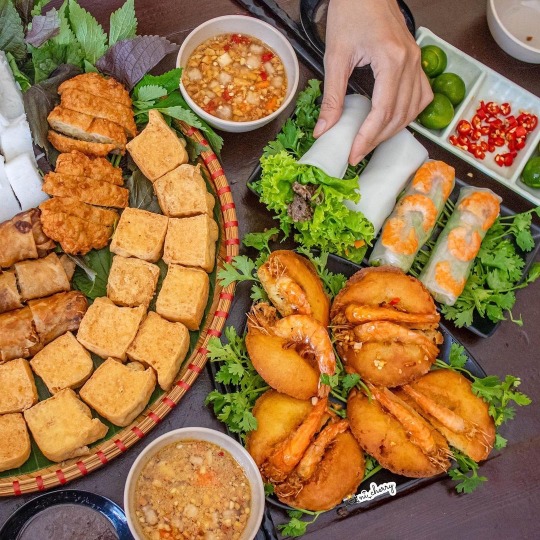

Vietnamese dishes from different regional cuisine: bánh xèo (Southern), bánh bột lọc (Central), bún đậu mắm tôm (Northern). Credit to ni_cherry (Instagram).
#vietnam#vietnamese#culture#travel destinations#travel#cuisine#vietnamese food#food and drink#asian food#snack food#street food#food photography#food#foodie#foodpics#foodphotography#foodlover#healthy food
989 notes
·
View notes
Photo
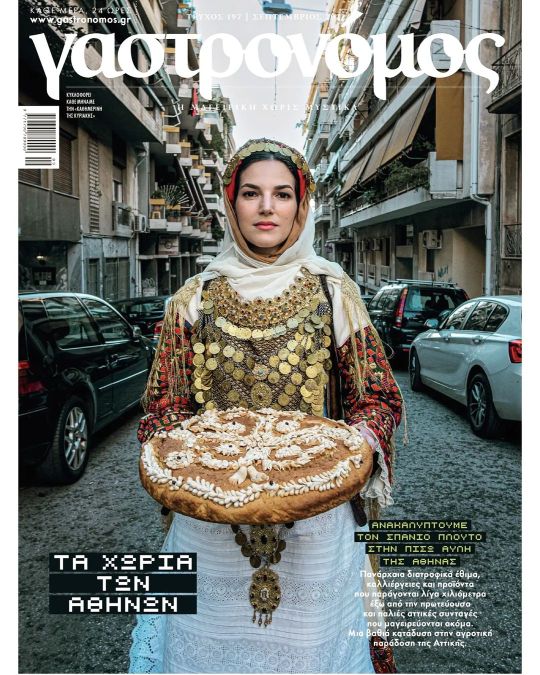
A cover photo from the Greek culinary magazine “Γαστρονόμος” (=Gastronome). featuring old traditional recipes from rural Attica. The photo was taken by Michael Pappas.
#greece#tradition#culture#traditional clothing#folk clothing#traditional dress#folk dress#historical fashion#arvanite clothing#food#pie#greek culture#greek cuisine#large
606 notes
·
View notes
Text
Favorite Foods: Sokka
Since Sokka is almost always shown shoveling food down his gullet during meal scenes, I figured he prefers foods that he can stuff into his mouth quickly and in large quantities. Like Katara, I also feel his favorite foods would tie back to key memories in his life.

Sea Prunes (Row 1) - Sokka likes eating sea prunes even more than his sister does. Being Hakoda's favorite food, I think eating sea prunes allows Sokka to feel closer to his father. I think he prefers eating them either stewed in five-spice (five flavor soup) or just blanched and paired with a dipping sauce. Real-life sea prunes are small, leathery mollusks traditionally eaten by First Nation and Alaska Native groups along the west coast.
Muktuk - Muktuk is whale skin and whale blubber served raw, like sashimi. It's typically snacked on as the rest of the whale is being butchered for later consumption. Sokka has fond memories of his father's hunting crew bringing home a whale and his father offering him the first bite of muktuk.
Seal Jerky - Sokka's favorite portable snack. Seals are the largest animal that Sokka has ever successfully hunted on his own, so he feels a real sense of pride when he eats this jerky.
Polar Bear Stew - Stew made from polar bear meat. Polar bears are revered in Inuit culture as the greatest of all bears, so successfully hunting one is a considered an impressive feat. As such, polar bear stew is considered quite a delicacy in the SWT. Sokka has only had the dish once, thanks to the bravery and skill of his father's hunting team, and dreams of one day bringing home another polar bear for the whole village to enjoy.
Fermented Eider Egg - Eider is a species of arctic duck. Their eggs are buried underground and left to ferment. They're said to taste like a strong cheese. There's no deep reason why Sokka loves them, he just likes that he can stuff a bunch into his cheeks like a squirrel. ^_^
Green Kasha - Green Kasha refers to a mash of different tundra greens such as sourdock, rhodiola leaves, arctic willow, and mountain sorrel mixed with rendered blubber oil. The oil acts as an emulsifier as it slowly gets incorporated into the mash of greens. Green kasha is used as a dipping condiment for various types of arctic meat. Sokka likes it because it gives him a whole new way of enjoying his favorite foods.
Kumis - Kumis is a fermented dairy product traditionally made from mare’s milk. Sokka was introduced to the drink by Yue and the two often enjoyed the drink together--- the mild alcoholic content made them feel rather grown-up. The color of the drink also reminds Sokka of Yue's hair, so the drink is tied to Sokka's bittersweet memories of her.
Like what I’m doing? Tips always appreciated, never expected. ^_^
https://ko-fi.com/atlaculture
488 notes
·
View notes
Text
Black culture in Bluefields, Nicaragua! ✊🏿🇳🇮
#HappyHispanicHeritageMonth
#black people#black culture#my culture#bluefields nicaragua#nicaragua#afro nicaraguans#black nicarguans#afro latinos#nicaraguans#hispanic heritage#nicaribbean#caribbean#creole#latino#latinx#central america#rondon#nicaraguan cuisine#food#food culture#video#1980s#80s#sbrown82
72 notes
·
View notes